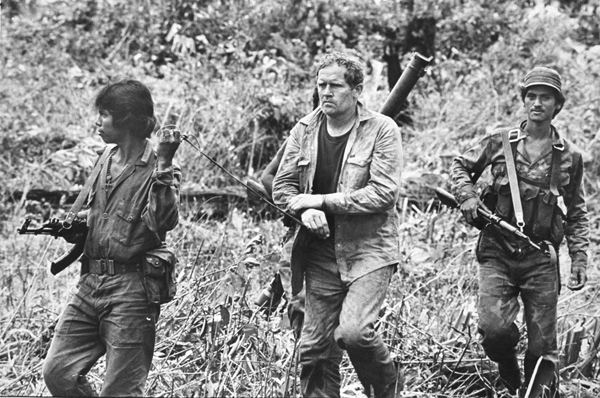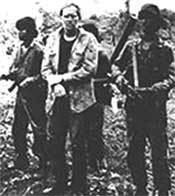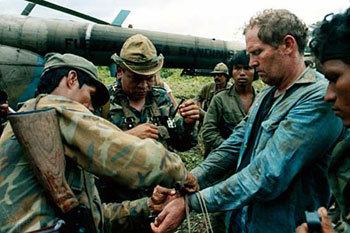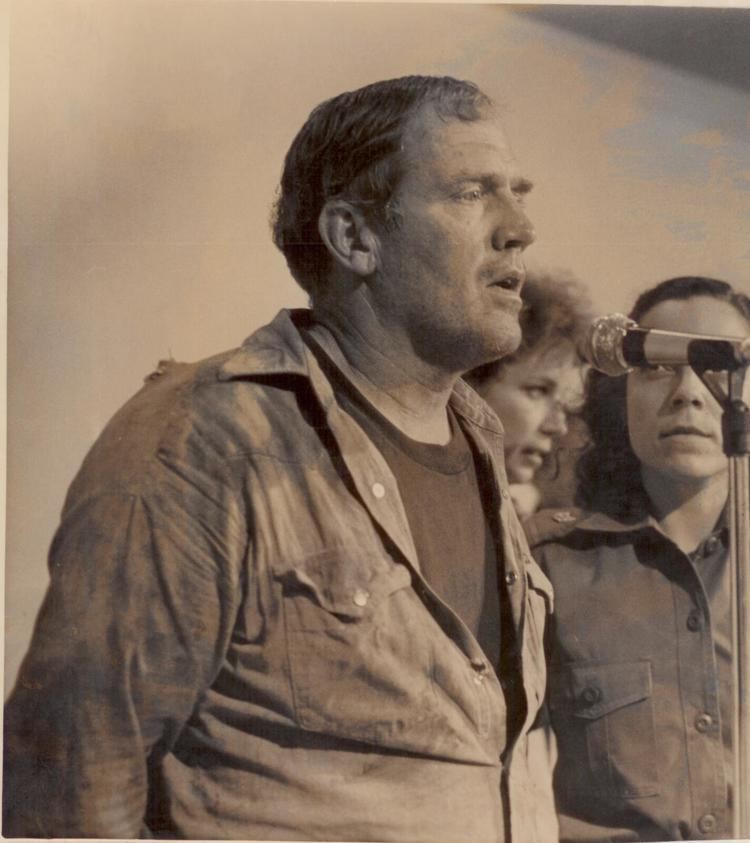Name Eugene Hasenfus | ||
 | ||
Similar Oliver North, John Poindexter, Fawn Hall | ||
Eugene H. Hasenfus is a former United States Marine who helped fly weapons shipments on behalf of the U.S. government to the Contra rebels in Nicaragua. He was the sole survivor after his plane was shot down by the Nicaraguan government in 1986, and was sentenced to 30 years in prison for terrorism and other charges. The statements he made to the Sandinista government resulted in a controversy in the U.S. government, after the Reagan administration denied any connection to him.
Contents

Capture

Hasenfus was a former Marine from Marinette, Wisconsin. On October 5, 1986, Hasenfus was aboard a Fairchild C-123 cargo plane, N4410F, when it was shot down over Nicaragua by the Sandinista government. The plane had been flying weapons to the anti-Sandinista Contra rebels. Three members of the flight crew were killed: Hasenfus was the only survivor. The two pilots and a Nicaraguan radio operator died in the crash. Hasenfus had been wearing a parachute, unusually for CIA operatives at the time. Scholar William LeoGrande stated that Hasenfus managed to dive out of the open cargo hatch of the plane after it was hit by the Nicaraguan missile; he was later captured while sleeping in a makeshift hammock made from his parachute.
CIA links

After he was captured by the Nicaraguan government, he stated at a press conference that he had previously dropped supplies to Central Intelligence Agency agents in South-east Asia, and that flights into Nicaragua were directly supervised by the CIA. His statement also included his recruitment by a friend in the CIA, an operation based in Ilopango airbase in El Salvador, supported by U.S. army colonel James J. Steele. The CIA and the U.S. government of Ronald Reagan denied any connection with the flight, though they said they supported any civilian effort to support the Contras. Hasenfus later repudiated his statement, saying that he was unaware if his fellow workers were employed by the CIA, and that he had only heard rumors to that effect. The men in question, Max Gomez and Ramon Medina were Cuban Americans. The CIA had at the time been legally forbidden from helping the Contras by the U.S. Congress. Gomez and Medina had been identified as individuals who had helped organize covert arms supplies to the Contras. Soon after his capture he said that the two men were friends of then-vice-President of the U.S., George H. W. Bush, but later retracted this statement as well, saying he was not sure. Hasenfus was charged with "terrorism, conspiracy and disturbing public security". Hasenfus stated that he was sure, however, that the operation to supply the Contras with weapons, named Enterprise, was ultimately supervised by the U.S. government. The capture of Hasenfus provided direct evidence of a link between the Contras, and the U.S. government and the Reagan White house; documents found on the dead men linked them to Oliver North.
Sentencing and controversy
Hasenfus was tried in Nicaragua, and on November 15, 1986 sentenced to 30 years in prison for terrorism and other charges. His wife Sally made a plea to Nicaraguan president Daniel Ortega for clemency. Nicaraguan defense minister Humberto Ortega stated later that the sentence was not directed at Hasenfus himself, but toward the "irrational, unjust policy" of the U.S. government. On December 17, 1986 Hasenfus was pardoned and released by the Nicaraguan government, at the request of U.S. Senator Christopher Dodd. Hasenfus subsequently unsuccessfully sued Secord, Albert Hakim, Southern Air Transport and Corporate Air Services over issues relating to Hasenfus' capture and trial.The controversy over the flight led U.S. House of Representatives Speaker Thomas P. O'Neill to launch an investigation into the flight. The U.S. press generally believed that there was more to the story of Hasenfus than the Reagan administration had admitted; according to scholar Scott Armstrong, this had the effect of making them more skeptical of the U.S. government's initial denial of the weapons-for-hostages deal during the Iran-Contra scandal.
